[ Health wise]
Preventing womb cancer
Pap smear test-a must:
by Nilma DOLE
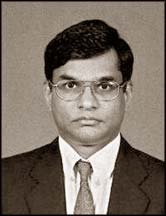 |
|
Dr. Gamini Perera |
Women are susceptible to many diseases related to the womb making it
essential to go for scans every now and then. "Every five years, from
the time a woman becomes sexually active, a pap test should be done to
check for womb-related problems", said Dr. Gamini Perera, Consultant
Obstetrician and Gynaecologist of the Castle Street Hospital for women.
There are three types of common diseases related to the womb - cervical,
ovarian and endometrial cancer. "Cervical cancer (or cancer in the neck
of the womb) can be detected with a simple pap smear test which is
easily done at medical health clinics by Medical Officers for Health (MOH),
said Dr.Perera.
"Pap tests are painless and relatively easy to do but the real
problem starts when a pap test is positive and the patient doesn't
follow up" he continued. There are special clinics to obtain treatment
for cervical cancer and the tests should be repeated in three to twelve
months. "A proper inspection of the cervix can be done with the help of
a 'colposcopy'", said Dr. Perera.
The most important risk factor in the development of cervical cancer
is infection with a high-risk strain of 'human papillomavirus' (HPV).
The virus cancer link works by triggering alterations in the cells of
the cervix, which can lead to the development of 'cervical
intraepithelial neoplasia' that can lead to cancer.
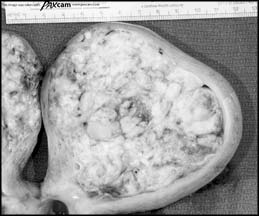 |
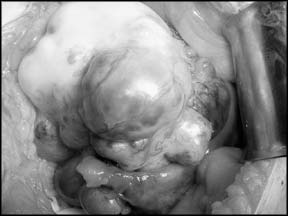 |
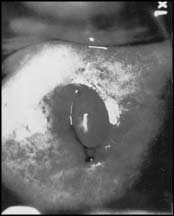 |
|
Endometrial cancer |
Ovarian cancer |
Cervical cancer |
The other type is ovarian cancer which is difficult to detect because
it is well inside the abdomen. "Some patients don't even show symptoms
or any signs and, more often than not, most of the cases once detected,
it's too late" said Dr. Perera.
The third one is endometrial cancer which is several types of
malignancy present in the endometrium, or lining of the womb. "The most
common is `endometrioid adenocarcinoma', which typically occurs within a
few years of menopause, present in older women or women who have not
given birth". It is associated with excessive estrogen exposure, often
developing in the area of 'endometrial hyperplasia', and present most
often with vaginal bleeding. Endometrial carcinoma is the third most
common cause of gynaecological cancer deaths (behind ovarian and
cervical cancer). A total abdominal hysterectomy (surgical removal of
the womb) with bilateral `salpingo-oophorectomy' is the most common
therapeutic approach. Speaking to the Sunday Observer about 'Uterine
fibroids', Dr. Perera said that these are benign tumours which grow from
the muscle layers of the uterus which is rather common."Fibroids rarely
cause cancer but they are the most common type of tumours in women" said
the doctor."There have been rumours that contraceptive pills cause
cancer in the womb but this isn't true, and in fact they actually reduce
the incidence of cancer", enlightened the doctor.He mentioned that scans
and pap tests should be done by women and in Sri Lanka, there are
clinics that have certain days where they do it free conducted by the
Health Ministry. Many private health clinics and government health
dispensaries also offer similar service.
"The problem arises when individuals find it cumbersome to take tests
that are painful but must remember prevention is always better than
cure" said Dr. Perera.
**********
Symptoms:
Cervical cancer
Abnormal bleeding which can be heavy or light bleeding.
Unusual heavy discharge that can be foul smelling, watery, thick or
with mucous.
Pelvic pain that can be mild or severe.
Pain during urination.
Bleeding in between regular menstrual periods, after sexual
intercourse, douching, or pelvic
examination.
Ovarian cancer:
Loss of appetite
Unexplained weight gain
Swelling in the abdomen
Abnormal vaginal bleeding
Pain during sex
Changes in bowel or bladder habits
Constipation, diarrhoea or needing to pass urine more often.
Endometrial cancer:
Bleeding after menopause
Prolonged periods or bleeding between periods
An abnormal, non-bloody discharge from
the vagina
Pelvic pain
Pain during intercourse
Unintended weight loss.
**********
Economics of vegetarianism
By D.P. Atukorale
In Sri Lanka wide economic disparities are responsible for
inequalities in food availability and food consumption among various
social strata. We need to discard various myths like that of good
nutrition being synonymous with expensive food.
If a person wanted to get all the essential amino acids (which are
found in proteins) vitamins, and minerals we have to advise our patients
to consume eggs, milk and other animal proteins such as beet, liver and
mutton. Even today many doctors are seen advocating the consumption of
expensive animal foods for recovery from illnesses.
The increase in prices of all foods in our country leaves a majority
of the population devoid of "so-called nutritious animal foods" such as
fish, meat and eggs. The need for the hour for both families and
institutions is to try and substitute low-cost nutritious foods into the
budget. But there are economic advantages of a vegetarian diet.
Cost
It has been estimated that the cost involved in the production of
animal foods is 6 to 10 times greater than that involved for vegetarian
foods. The caloric return is much greater when good land is used to grow
food grains rather than to produce milk. At least 50% more biologically
useful calories can be obtained from the crop in terms of the yield as
compared to milk produced.
It has been estimated that it is possible to feed 7 times as many
people on crops consumed directly than crops first consumed by livestock
and then converted to meat and milk and eaten by people. if countries
were to accept a predominately vegetarian diet, many more people could
be fed on same acres.
Approximately 08kg of vegetarian protein is required to produce 01kg
of animal protein (e.g. beef which contains unhealthy cholesterol,
saturated fats and other chemicals which may produce cancer (of large
intestine, breast and prostate), diabetes, obesity and renal disease
etc. This implies that for the same nutritional constitution, one ends
up spending more of country's available resources if animal foods are
available.
When vegetarian food is consumed by man, if relatively well digested,
the food yields more nutrients than had it been first fed to the animals
and the animal products then fed to man. The efficiency with which
animals convert the feed into food for man is thus only partial.
I am citing a few examples of foods and the nutrient content of
vegetarian and non-vegetarian foods. Just to cite few examples (per 100g
of edible portion)
(a) Hens egg (100 g) supplies 176 Kcals 13.3g of fat 60 mg of
calcium, 2.1mg of iron and 360 megram of carotene.
(b) Fowl (100g of edible portion) supplies 109 Kcal of energy 25.9g
of protein, 0.6gm of fast, 25mg of calcium.
(e) Fish (100g) contain 650 Kcals of energy, 16.6g of protein, 1.4
fat, 1.0mg calcium.
(f) Soyabean (100g of edible portion) provides 342 Kcal of energy,
43.2 of protein, 19.5g of fat (no cholesterol in soya) 240mg calcium,
11.5 mg of iron and 426mcg of carotene
(h) Peanuts (Ground nuts) 100g edible portion contains 567 Kcals,
25.3g protein 40.1mg of calcium, 2.8mg of iron, and 37mcg of
carotene.per unit cost of non-vegetarian food such as fowl, mutton,
port, beef, fish and milk is 10 to 40 times that of vegetarian foods
such as soyabean, dhal and ground nuts.
Thus, although some non-vegetarian doctors argue that animal foods
are good sources of proteins and calories the actual available protein
and calories to man is significantly lower. Thus man ends up paying an
extra amount of money for nutrients which are actually not fully
available to him.
Nutritive benefits
Coming to the consumer level, vegetarian food is not lacking in any
nutrients. Non-vegetarian diet does not contain fiber that prevents
colon cancer. In Sri Lanka non-vegetarian foods are extremely expensive
compared to vegetarian diet. About 14% of the total protein and 17% of
the calories of normal non-vegetarian diet are believed to be met from
animal origin. It is estimated that if these calories are consumed from
vegetarian sources then about 5,000 Kcals per day per person would be
made available to the world over.
It is a misconception that vegetable foods are lacking in vital
nutrients. If a comparison of the relative costs of per unit of protein
and calories is calculated, the vegetarian sources clearly emerge as
cheaper sources of both good quality proteins and calories, vitamins and
minerals.
Conclusion
I is clear that non-vegetarian food is neither superior, better off
nutritionally, nor it is economically advantageous though it is true
that the amino-acid profile of some animal proteins such as eggs and
milk ranks better than some of the vegetable protein. This can be
overcome by supplementation of the limiting amino acid through other
foods such as, legumes (Soya, dhal, lima beans) beans and "dambala" and
eating rice or bread and dhal or peanuts (ground nuts) which can be used
as curries etc.
All the other vegetables and fruits contain high quality proteins,
calories, vitamins, mineral sand fibre (which animal food does not
contain). Vegetarian foods do not contribute to development of cancer,
obesity, hypertension, gall bladder calculi, diabetes,
hypercholesterolemia and vegetarian diet is very much cheaper than
animal diet.
World's first pregnancy using IVF egg-screening technique
A British woman has become the first in the world to conceive using a
new IVF technique that could more than double the success rate of
pregnancies.The 41-year-old woman was treated after suffering two
miscarriages and having 13 courses of IVF, none of which led to a baby.
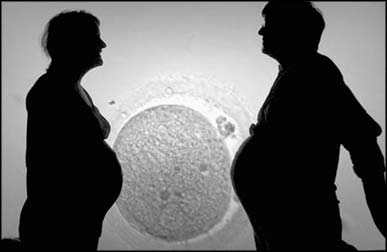 |
|
The new method allows doctors to
screen eggs for chromosome abnormalities before fertilising
and implanting them. |
The technique allows doctors to screen fresh eggs for abnormal
chromosomes, which are a major cause of miscarriage. Many embryos that
have damaged or missing chromosomes miscarry, but others go on to
produce conditions such as Down's syndrome.
The woman, who was treated by doctors at the Care Fertility Group in
Nottingham, is expected to give birth in the next two months.
Fertility clinics have long sought a way to check eggs or embryos for
major chromosome abnormalities. A healthy egg carries 46 chromosomes -
23 pairs - but before it can be fertilised it needs to ditch 23 of
these, which it packages into a structure called a polar body. The new
technique checks the chromosomes in the polar body.
Doctors at the clinic collected nine eggs from the woman after
stimulating her ovaries with standard hormone-based drugs. Using the new
screening technique, they found that only two had intact chromosomes and
so were likely to implant and lead to a successful pregnancy. Both
embryos were implanted into the woman and one went on to a pregnancy.
Simon Fishel, director of the Care Fertility Group, said the
milestone demonstrated the "wonderful ingenuity of humankind". The
screening process costs £1,950 on top of standard IVF treatment, which
can £3,500. "One of the main reasons why IVF doesn't work is chromosomal
abnormality," said Fishel. "Full chromosome analysis offers huge hope to
many couples who have a poor chance of conceiving, those who have had
many failures, and for those who want to maximise their chance at each
attempt. We now have the best tool for achieving this."
Up to half the eggs of younger women, and up to 75% in women over 39,
have abnormal chromosomes.
The technique, called polar body array comparative genomic
hybridisation, is the first that can check all of an egg's chromosomes
to see if any are missing or duplicated.The process uses a laser to make
a small incision in the outer membrane of the egg, from which doctors
can extract the polar body containing the 23 chromosomes that were
expelled before fertilisation.
The doctors then use a computer-driven screening process to check if
all of the chromosomes are present.
"This screening method has the potential to improve birth rates,
minimise the incidence of miscarriage and birth defects caused by
chromosomal irregularity," Fishel said.
Fishel's clinic has agreement from the government's fertility
watchdog, the Human Fertilisation and Embryology Authority, to offer the
technology to any of their patients. Because the procedure is
experimental, however, it will not yet be offered on the NHS.
The HFEA has ordered UK fertility clinics to take steps to reduce the
number of twins and triplets born to IVF couples. In most cases, this
will involve transferring only one embryo to the womb at a time.
-Guardian
Rare skin disorder appears in Sri Lanka
by Harshini PERERA
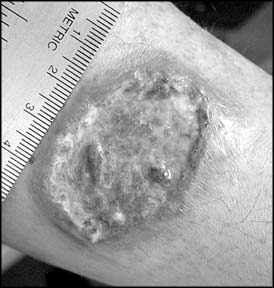 A skin disease medically known as "Leishmaniasis" has struck Matara,
Hambantota, Polonnaruwa and Anuradhapura while some cases have been
reported in other places of Sri Lanka. The disease is spread by a
protozoan parasite, known as Sandfly is identified as Leish Mania. The
history of this disease dates back to 19th century, when the germ was
first identified by the Scottish pathologist, Sir William Leishman.
There are 350 million patients at risk globally while it shows a growth
in Sri Lanka. The disease at present is prevalent in 88 countries,
mainly in the African countries, Afghanistan, Pakistan, Central America
and Latin America. A skin disease medically known as "Leishmaniasis" has struck Matara,
Hambantota, Polonnaruwa and Anuradhapura while some cases have been
reported in other places of Sri Lanka. The disease is spread by a
protozoan parasite, known as Sandfly is identified as Leish Mania. The
history of this disease dates back to 19th century, when the germ was
first identified by the Scottish pathologist, Sir William Leishman.
There are 350 million patients at risk globally while it shows a growth
in Sri Lanka. The disease at present is prevalent in 88 countries,
mainly in the African countries, Afghanistan, Pakistan, Central America
and Latin America.
Dr. Palitha Mahipala, Deputy Director General of the Ministry of
Health explained to the Sunday Observer that in Sri Lanka the very first
case was diagnosed in 1992 and 2000 cases have been reported since then.
Mainly it develops as a skin disease where macule develops into an
ulcer, while the margin of the ulcer is elevated. It could either be a
single ulcer or multiple which turn into skin lesions. " This is a
vector borne disease where an infected sandfly becomes a vector. There
are two forms of leishmaniasis, the Cutaneous and the Visceral which
affects the internal organs of the body. The cutaneous form is common in
Sri Lanka."
"It is the responsibility of the Health Ministry to arrest the
disease from further spreading. So, we have organised a national
workshop to formulate an action plan. Meanwhile, the director
anti-leprosy campaign has been kept informed," said Dr. Mahipala.
The Ministry has executed two major actions against Leishmaniasis;
first to control the vector and treat the infected patients. Dr.
Mahipala explained all the medical officers in the island are well aware
of the disease, so when an infected patient turns up for treatment
he/she is directed to a dermatologist."
Test predicts cancer recovery chances
LONDON: Scientists have developed what they claim is a pioneering
test that can help predicting a breast cancer sufferer's chance of
recovery with 80% accuracy.
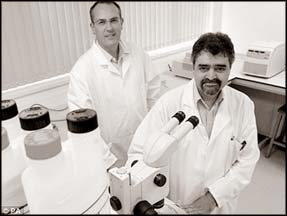 Until now the most common technology for breast cancer testing was
ultrasound computed tomography, used in diagnosis. This uses sound waves
to create a three-dimensional image and detect the disease without the
use of dangerous radiation. Until now the most common technology for breast cancer testing was
ultrasound computed tomography, used in diagnosis. This uses sound waves
to create a three-dimensional image and detect the disease without the
use of dangerous radiation.
Now, an international team led by Mount Sinai Hospital in Toronto,
has designed the new testing tool, DyNeMo, which can predict the outcome
in breast cancer patients, in a bid to assist doctors in making informed
decisions on treatment.
According to the scientists, the new technology also analyses tumours
to determine the best treatment options for individual patients, the
`Nature Biotechnology' journal has reported.
Team leader Dr Jeff Wrana wrote: "Our hope with this technology is to
eventually provide individualised analysis to breast cancer patients and
their oncologists so that they are better informed and empowered to
select a treatment best suited to them."
In their study, the scientists analysed more than 350 patients and
found that those who survive breast cancer have a different organisation
of the network of proteins within their tumour cells.
-Times of India
|


